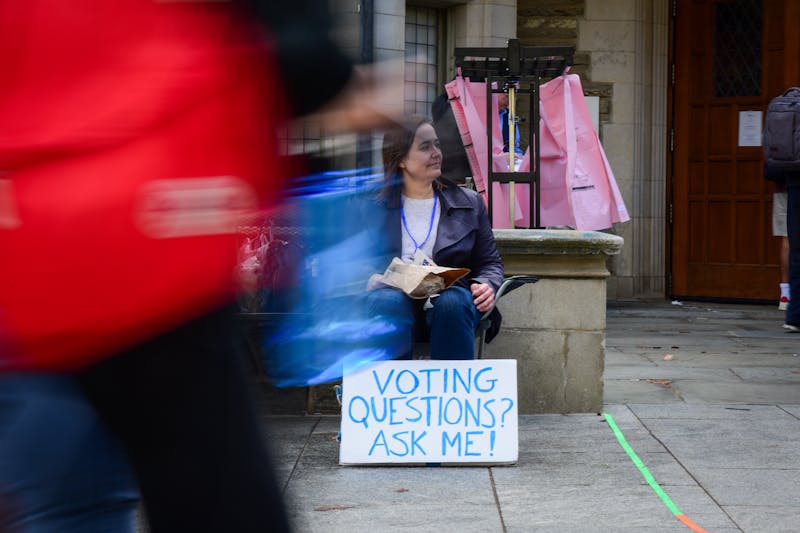
Students discuss the women's march and hopes for future activism
Credit: Joy LeeThe women of Penn were among the millions of marchers who flocked to Washington D.C. the day after President Trump’s inauguration as part of the Women’s March on Washington.
Women were “desperate for a moment of unity,” College senior Syra Ortiz-Blanes said. Ortiz-Blanes, who co-founded the feminist art collective We are Watching , attended the Philadelphia Women’s March, describing it as “cathartic.” As an “unofficial first step” for women, she said it was “important to go and support [the march] physically, but also to come together in a moment that was difficult for so many people.”
College freshman Lilly Balla knew she wanted to go to the D.C. march since it was announced in November. She first became politically active after the solidarity march and speak out at Penn that occurred the day after the election.
“We need to come together to undo the isolation of the Trump campaign,” Balla said. “You can’t ignore 3 million people.”
Balla spoke of the responsibility of Penn students, as members of the institution that educated Trump, to be active voices in protests and movements.
“I wore all Penn gear to [the] march to show that we, as an institution, don’t support [Trump],” Balla said.
Ortiz-Blanes said she did not expect an acknowledgement from Trump, and speculated that to “actually bring the march up would be to legitimize it.”
However, she still sees the march as more than just a demonstration of women’s unity.
“I hope that [Trump] feels the pressure of millions of people marching against him and all of the oppression that he represents in all its manifestations,” Ortiz-Blanes said.
While College senior Rhea Singh said the march was “definitely a step,” she added that the event was also “steeped in privilege.” Singh is also a co-founder of We are Watching and attended the march in Washington D.C.
Both Ortiz-Blanes and Singh felt that the lack of trans-inclusivity was exhibited by the posters and slogans of the marchers in both Philadelphia and D.C., which proclaimed “the pussy grabs back,” or “the future is female.”
“A lot of the marchers were focused on female identity versus woman identity,” Singh said.
She added that while the organizers of the march made a “very deliberate attempt” to include all types of feminism and voices of women, the marchers were “centered in white feminism.”
“That said, I think that I’m glad that [the march] happened and it can begin a great conversation about intersectional feminism,” Ortiz-Blanes said.
While the Women’s March on Washington was praised for its peaceful nature and lack of arrests, both Ortiz-Blanes and Singh see this as more a reflection of the relationship between the race and gender of the majority of the marchers and the police. Singh noted the lack of snipers on the federal buildings in D.C., whereas when she went to the People’s Climate March there was a visible personnel presence.
“The police think that a bunch of white women who are upper middle class are harmless,” Singh said. “Whereas had every single person had been a person of color, the police presence would have been different.”
“We need to look at the systematic reasons,” Ortiz-Blanes said in regards to the safety of the march.
She also stressed the importance of people of all identities continuing to march, to be politically active, and to educate themselves on the women’s movements and the political climate.
“A march is not where history is made,” Singh said. “It’s what happens after.”
The Daily Pennsylvanian is an independent, student-run newspaper. Please consider making a donation to support the coverage that shapes the University. Your generosity ensures a future of strong journalism at Penn.
Donate






